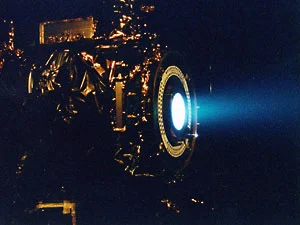The future of space travel and exploration is an exciting topic with a lot of potential. Advances in technology and renewed interest in space exploration have opened up new possibilities for discoveries and achievements in space. This blog post will explore some of the most exciting developments in this field and discuss how they will shape the future.
- Introduction
- New propulsion systems and space vehicles
- Plans of colonization of other planets
- The potential for space tourism
- Breakthroughs in the search for signs of life on other planets

1. Introduction
The future of space travel and exploration is an exciting topic that has garnered a lot of attention in recent years. With major advancements in technology and a renewed focus on the potential of space exploration, the possibilities for what we can achieve in the realm of space travel and exploration are truly staggering. From the colonization of other planets to the continued search for extraterrestrial life, the future of space travel and exploration promises to be filled with incredible new discoveries and groundbreaking achievements. In this blog post, we will take a closer look at some of the most exciting developments in the field of space travel and exploration and discuss how these advancements are poised to shape the future of our species.
2. New propulsion systems and space vehicles
The space industry is constantly pushing the boundaries of what is possible with new and innovative propulsion systems. These advancements have not only allowed us to explore the depths of space like never before, but they have also opened up new possibilities for space travel and exploration.
Ion Engines or Electric propulsion
One of the most exciting developments in propulsion technology is the use of ion engines. This is in contrast to traditional propulsion systems, which use chemical reactions to create thrust. In electric propulsion, an electric power source, such as solar panels or a nuclear reactor, is used to generate electricity. This electricity is then used to ionize a fuel, such as xenon gas, into plasma. The plasma is then accelerated by electric fields, and directed by magnetic fields as it is ejected from the engine, creating thrust for the spacecraft.

It can reach speeds up to 90,000 meters per second It have the potential to revolutionize space travel by allowing for longer and faster journeys through the solar system.
Solar Sail
Another exciting development is the use of solar sails. This technology harnesses the power of the sun’s rays to propel a spacecraft, allowing for much faster travel compared to traditional propulsion systems. It contains a light chipset and attached with large, reflective sails. It can go upto 20% the speed of light.

In 2010, Japan’s IKAROS project successfully demonstrated the feasibility of using a large solar sail on a mission to Venus. The sail, which measured 196 square meters in area, was deployed during the mission and propelled by the radiation from the sun.
Nanospacecraft
Nanospacecraft, also known as nanosatellites or CubeSats, are small satellites that typically measure 10 cm x 10 cm x 10 cm and weigh less than 1.33 kg. These small spacecraft are designed to perform various space-related tasks, such as Earth observation, communication, and scientific research. Nanospacecraft are often much less expensive to build and launch than traditional satellites, which makes them an attractive option for space missions. They are typically powered by solar panels and use miniature propulsion systems, such as ion thrusters, to maneuver in space.
Overall, these advancements in propulsion technology are paving the way for exciting new developments in the field of space exploration. As we continue to innovate and push the boundaries of what is possible, we can look forward to a future filled with incredible discoveries and breakthroughs in space travel.
3. Plans of colonization of other planets
Different government and private space agencies (such as NASA, European Space Agency, SpaceX) have plans to explore and possibly colonize Mars in future. These plans are very ambitious and will require a lot of work and technology to make them a reality.
The potential for other planets to be habitable for humans
Recent discoveries have shown that there may be other planets in our galaxy that could potentially be habitable for humans. This is incredibly exciting news, as it opens up the possibility of finding another planet where humans could live and thrive. These planets are called “Potentially Habitable Planets”. They are located in the “habitable zone” of their star, which means that they are at the right distance from the star to potentially have liquid water on their surface. This is considered to be a key requirement for the development of life, as we know it.

The challenges and opportunities of colonizing other planets
The colonization of other planets is a goal that many space agencies and private companies are working towards. While this presents a number of exciting opportunities, it also comes with many challenges. One of the biggest challenges will be finding a way to sustain life on a planet that is not Earth. This will require developing new technologies for generating oxygen, producing food, and building habitats. Additionally, the cost and logistics of transporting humans and supplies to other planets will be significant. However, the potential rewards of successfully colonizing other planets are vast.
4. The potential for space tourism
The potential for space tourism is an exciting development in the field of space exploration. Agencies like SpaceX, Virgin Galactic, Blue Origin, Boeing are constantly working to make space tourism budget friendly.
With advances in space travel technology, it will be possible for private companies to offer trips to space for paying customers in near future. This presents a number of exciting opportunities, both for the companies involved and for the customers who will have the once-in-a-lifetime experience of traveling to space. Some of the potential benefits of space tourism include:
- Increased interest and investment in space exploration, which could lead to further advancements in technology
- Economic benefits for the companies involved and the potential for the creation of new jobs
- The opportunity for individuals to experience the thrill of space travel and to see Earth from a unique perspective

While there are still many challenges to overcome before space tourism becomes a widespread reality, the potential for this industry is enormous. It has the potential to open up new frontiers for exploration and to provide unique experiences for those who are willing to pay for the privilege of traveling to space.
5. Breakthroughs in the search for signs of life on other planets
Who doesn’t love to watch movies or stories on Aliens? The search for extraterrestrial life is a fascinating and ongoing area of study in the field of space exploration. In recent years, there have been several breakthroughs in this field that have increased our understanding of the potential for life on other planets.

For example, the detection of methane on Mars by ESA’s Mars Express orbiter has sparked speculation that there may be microbial life on the planet. The potential implications of finding evidence of extraterrestrial life are enormous, and could fundamentally change our understanding of the universe.
However, there are also ethical considerations surrounding the potential for making contact with other life forms. These are important issues that will continue to be explored as we continue our search for life beyond Earth.
Conclusion
In conclusion, the future of space exploration looks bright, with many exciting developments and missions on the horizon. Private companies like SpaceX and Blue Origin are making strides in the field of space travel, with the potential to make space travel more affordable and accessible. New technologies, such as electric propulsion and nanospacecraft, are making it possible for us to explore farther and faster in our solar system. As we continue to push the boundaries of what is possible, we can look forward to many new discoveries and milestones in the field of space exploration.


Can you write separate post on Ion Engines or Electric propulsion?